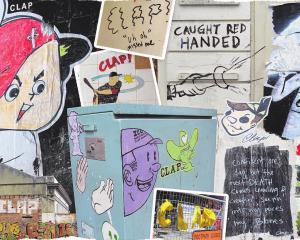In the past, Otago Museum curators have been more than happy to handle their various multi-legged insects, arachnids and invertebrates - even putting them on their face.
But not Cuddles from the Canterbury Museum. No-one would go near the furry Mexican red-knee tarantula with their bare hands yesterday - not even experienced museum forest and science centre co-ordinator Dr Tony Stumbo.
"Cuddles is a bit cheeky. A bite from one of these really hurts. The fangs can be quite long - up to a centimetre long.
"A former work colleague who works at the Wellington Zoo was telling us that this species can be a bit more temperamental than the ones that we currently have.
"Wellington Zoo will handle their Brazilian black tarantulas but they won’t handle Mexican red-knees because of that."
Although they have a venomous bite, it was rarely fatal to humans, he said.

These hairs can pierce human skin.
It was another good reason not to pick her up, he said.
"She’s been exploring her enclosure a bit.
"We weren’t able to go into her enclosure yesterday because she spent the entire day hanging from the roof near the [hatch] where you put your hand in."
The red-knee tarantula lives in the deserts and scrublands of Mexico, and can live for up to 20 years.
Cuddles came to Dunedin with two Brazilian black tarantulas from Canterbury Museum.
Dr Stumbo said the museum was being rebuilt and Otago Museum would look after them until the new Canterbury facility was complete.
He said Cuddles appeared to be settling in to her new home.
And as long as the only human interaction involved popping food in her enclosure, she was not expected to be any trouble.










